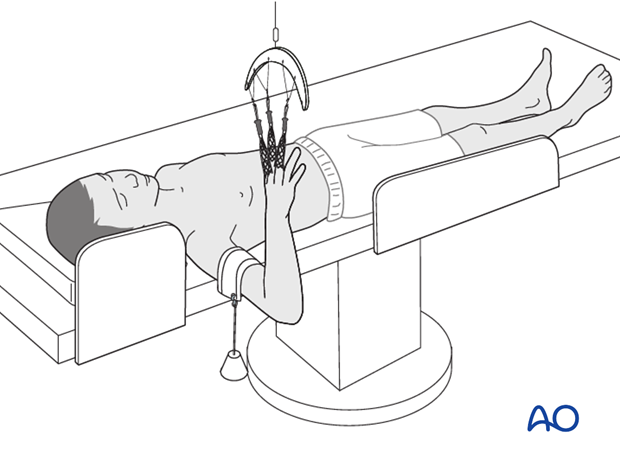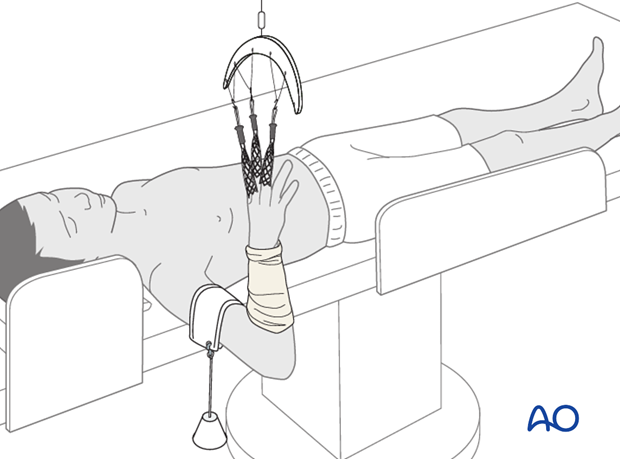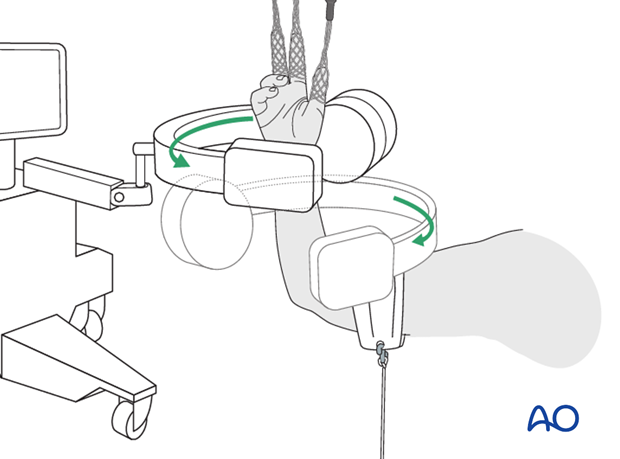Supine position for casting
1. Patient information
Before treatment discuss the following information with the patient/parents/caretakers:
- Nature of the injury
- The chosen treatment and why a particular treatment is selected
- Alternative treatments
- General operative risks
- Expected healing time
- Functional recovery
- Implant removal
2. Procedure preparation
Consider if the planned closed reduction is likely to be the definitive fracture management. If there is a high likelihood of internal fixation it may be better to start the procedure in an operating room instead of an emergency department.
Personnel need to know and confirm:
- Consent form, completed and signed
- Site and side of fracture
- Type of reduction planned
- Operative site has been marked by the surgeon
- Condition of soft tissues
- Patient positioning
- Comorbidities, including allergies
3. Anesthesia
- General anesthesia
- Conscious sedation
- Local nerve block or regional anesthesia is rarely used alone in children
- Combination of nerve block and light general anesthesia
4. Patient position
Position the patient supine and optionally place the forearm in finger traps.
If necessary, apply a strap with weight over the middle third of the humerus to provide additional traction.

If tubular bandage is to be used, position it before applying finger traps and traction.

5. C-arm positioning
If available use a mini-C-arm in a horizontal position which can be rotated to take orthogonal views without moving the arm.













